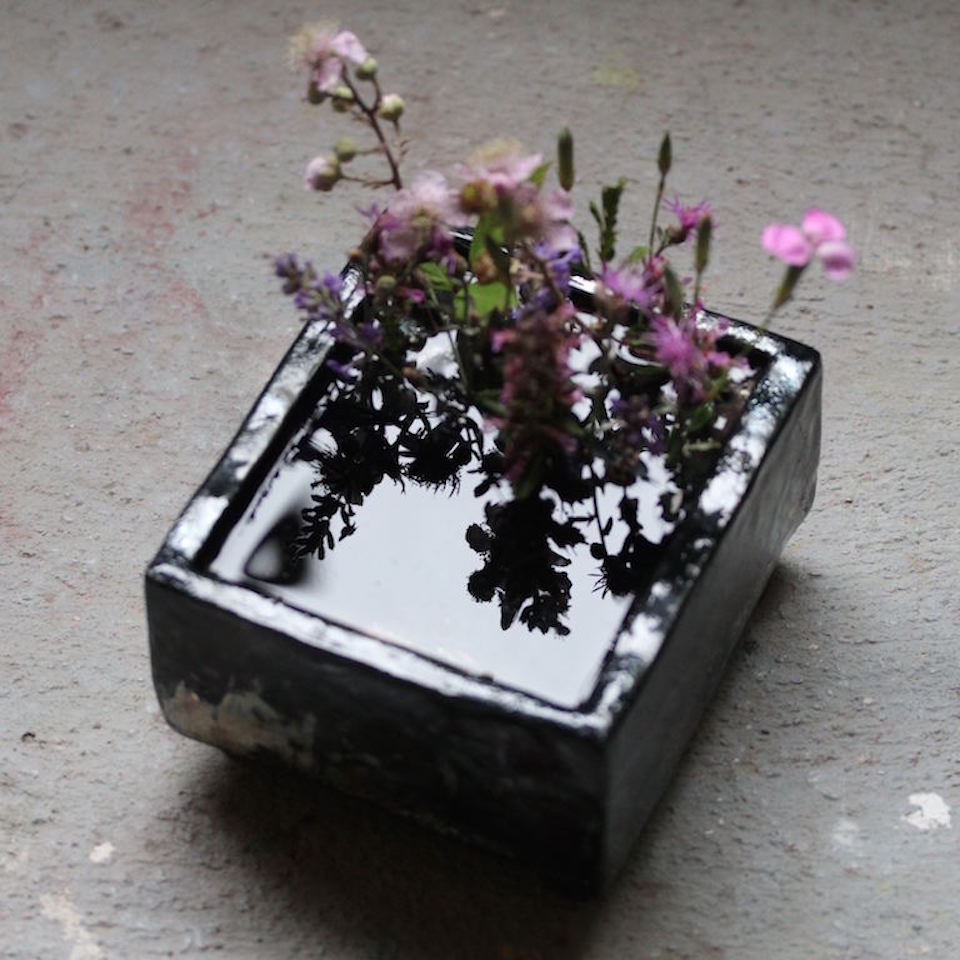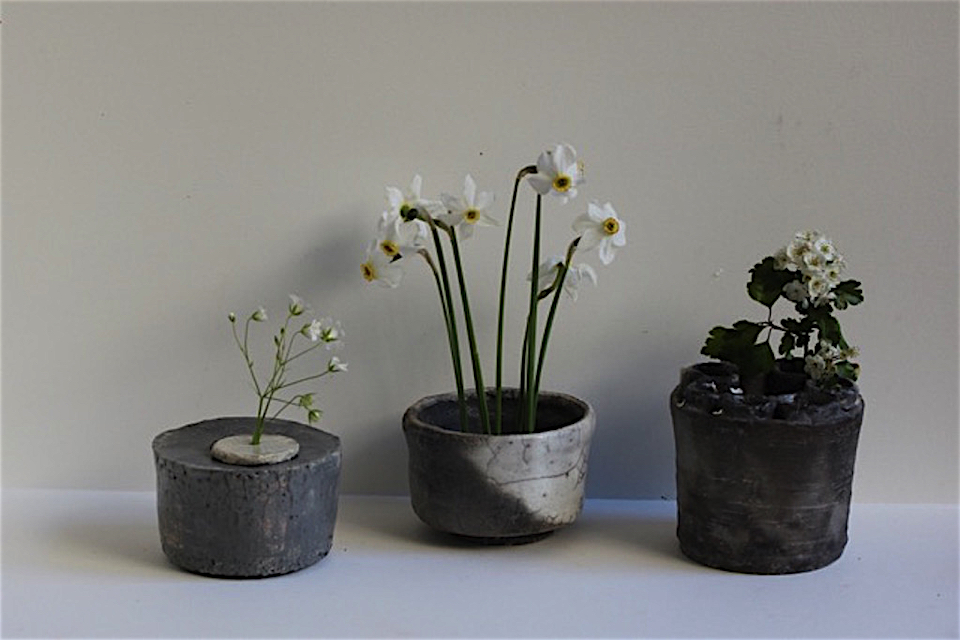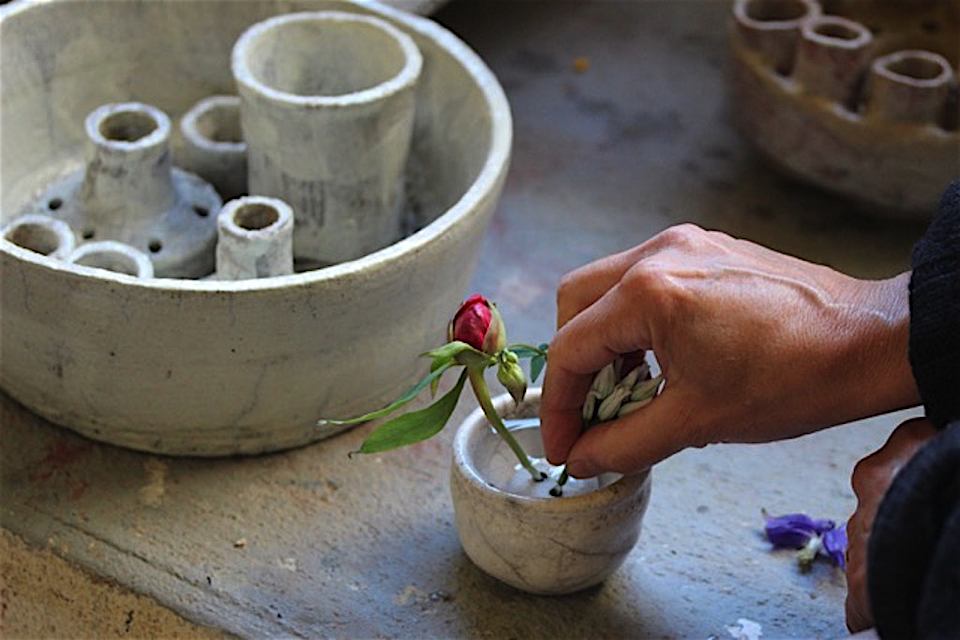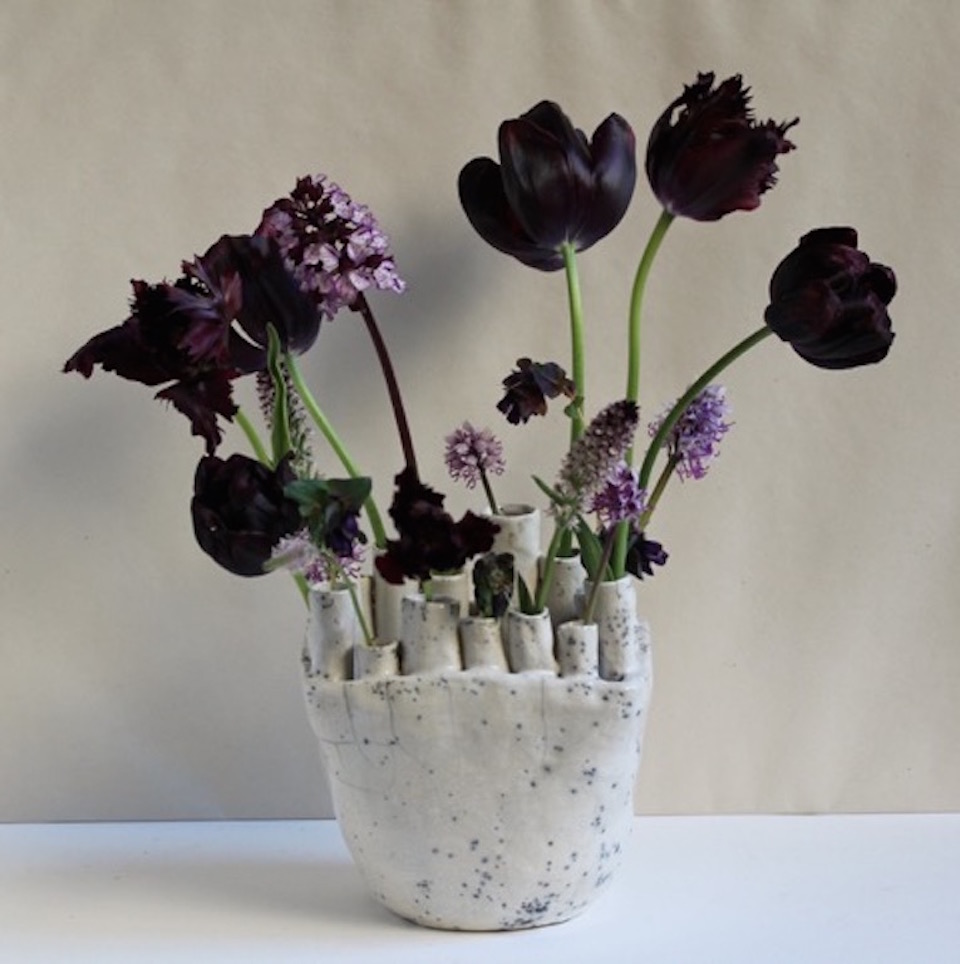HANDMADE
in collaboration with nature

Cécile Daladier
French artist Cécile Daladier, creates ceramic vases and vessels that make unexpected bouquets and offer a new way of looking at the natural world around us. Originally trained as a musician, Cécile also worked as a painter and a landscape designer before turning her attention to making hand built and Raku fired ceramics, but her deep passion for the botanical world has always been an integral part of her work since the beginning of her career.
Finding inspiration for her vases in the streets of Paris, collecting the small, fragile weeds that pop up in between the cobblestones, as much as in her thriving, wild garden in the heart of the Drôme in the French countryside where she now lives and works, her unique, sculptural vases and vessels feel like an ideal reflection of wabi sabi.
Not pristine nor perfectly formed, her work is none the less intuitively beautiful, poetic and harmonious. The earthiness of the glazed surfaces retain a raw quality, tending towards the neutral monochromes of grays, beiges, whites and creams, a perfect contrast to the colors of the plants and flowers.
Most of the vases have multiple openings, small, punctured holes for the wispiest of stems and larger, raised cones for tulips and bigger flowers, and they are often made to interact with the water, offering surfaces that reflect the light and their surroundings.
Why did Raku become your focus, if not your passion?
It is a way of making ceramics which is very free and open to improvisations, to invention, and I like how elements of the unexpected, of chance and surprise are part of the process. It is a very physical process as well and demands a rapidity which I also really like. It allows each person to develop their own style, their own technique.
Have you always worked with a wood burning oven when making ceramics?
It depends on the work. I have a very basic open framed, outdoor wood oven which was built according to instructions laid out by French ceramic artist, Camille Virot. My relationship with this oven is very engaged, like with a musical instrument. I use it most of the time as I live in the countryside and have access to a lot of wood, and I like using dried leaves and straw to smoke the pieces. Since we don’t have any neighbors it doesn’t bother anyone either.
Your work feels like a real collaboration with the botanical world, both urban and rural landscapes?
Since the beginning of my career I have worked with plants, whether taking their imprints on canvas or as a source of inspiration. And I love to garden. I don’t know how to live without plants. When I was living full time in the city I used to seek them out in the most remote locations where they seemed to be absent, like on a busy street, and appreciate their subtle beauty and their presence.
Do you make certain styles and shapes of vases in connection to the flowers and plants in season?
Yes. I like to gather various small bouquets from the garden and bring them inside, into the house. These collections are like memories of and witnesses to the outside world. With these pickings I create vases and they allow people to make small, indoor gardens in their homes. The change of seasons resonates indoors through the flowers and foliage, stems and colors. All of these factors might lead me to create a different type of vase depending on the time of year.
Did you study botany?
I really know plants by experience. I have always had a garden. For a time, I had a small, urban garden when I was in they city, but now that I am in the country my garden has a life of its own, it is without limits. And I really enjoy learning through books, gardening classes, working with other gardeners and cultivators. I appreciated a lot the seminars in Ethnobotany of gardens given at the Museum of Natural Science at the Jardin des Plantes in Paris, and learning about the history of man and plants, the different ways plants have been used and cultivated across various cultures and generations.
Can you talk a bit about your connection to water? It seems to be an important part of your work?
Yes, it is an important part of my work. I have developed different types of vases and sculptural objects using metal and glass which are not for holding water to keep plants alive, but simply for the water itself, as vessels to observe the water, the wind, the light and evaporation. A simple layer of water struck by light and air can serve as a tool for for observing the world around us, as a way of capturing and offering us a way to see a place. This series of work was called les capteurs. A little bit of water is enough to develop something very beautiful, very alive. A few flowers too. And these two go very well together…
Blaire Dessent
ceciledaladier.com
Blaire Dessent is an American in Paris working as a cultural writer, copywriter and translator with a specialization in the cultural and lifestyle industries including contemporary art, design, fashion and beauty. She is also special projects manager for American design at Triode, a leading design showroom located in the 6th arrondissement in Paris.
blairedessent.com

Cécile Daladier

Cécile Daladier

Cécile Daladier

Cécile Daladier

